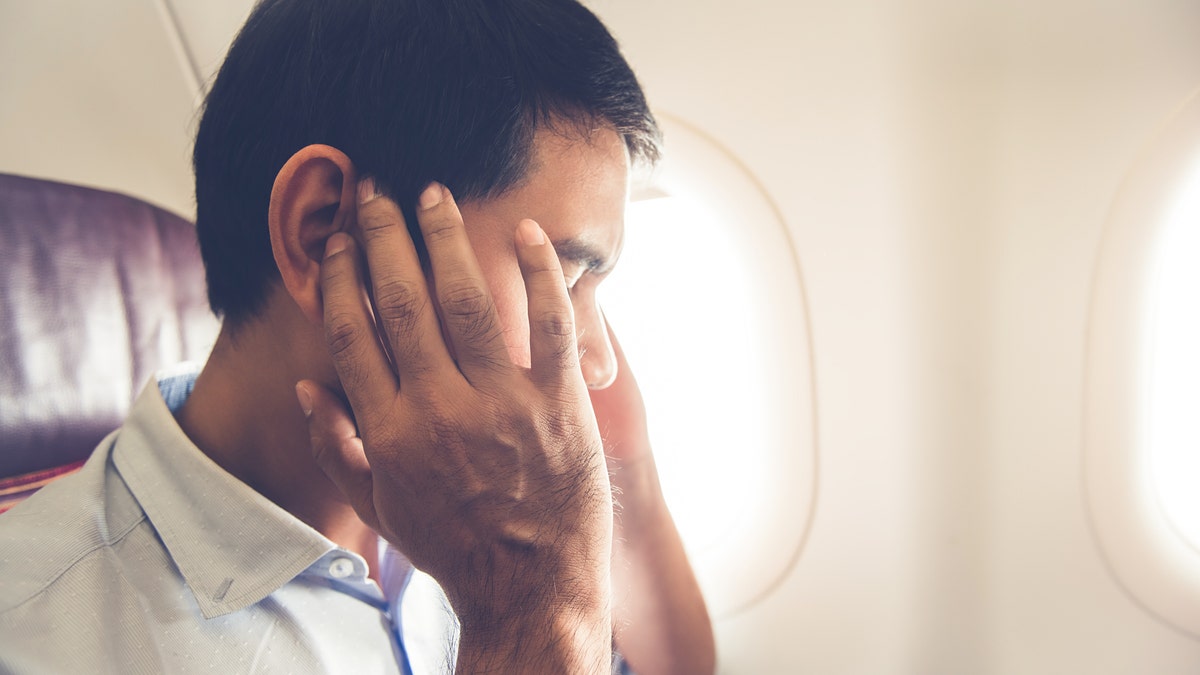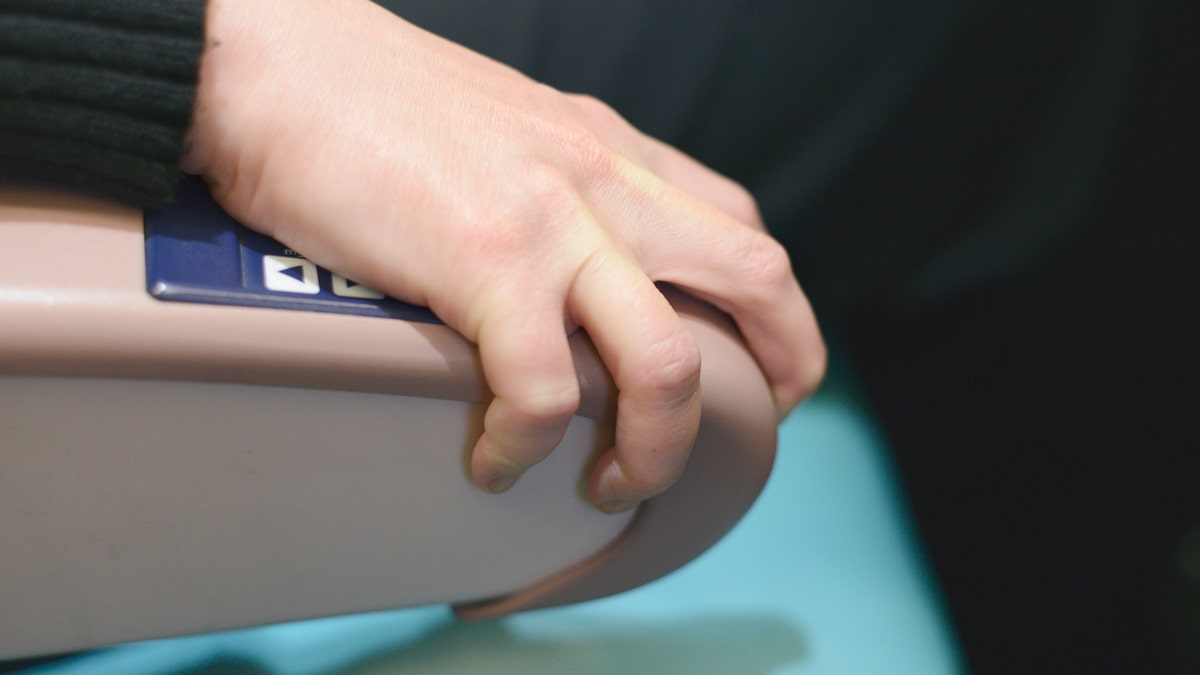
You may not be able to avoid flying, but you might be able to keep the anxiety at bay. (iStock)
Even people with access to private jets aren’t immune to it.
It's rumored that Ben Affleck has struggled with a fear of flying ever since he was a kid, when a plane he was in was struck by lightning. Sandra Bullock told The New York Times one of the reasons she accepted the lead role in “Gravity” was because it was the universe’s way of telling her she needed to face her fear. And while Aretha Franklin passed away having never performed in certain major cities, because they involved a flight, some others have beaten their phobias — in a way at least. Billy Bob Thornton, for instance, famously claimed he wasn't afraid to fly in an interview with Mr. Showbiz, as reported by Salon: “I don’t have a fear of flying,” the actor said. “I have a fear of crashing.”
But perhaps the best way to get over the fear of flying — and the National Institute of Mental Health estimates that 2.5 to 6.5 percent of Americans suffer from aviophobia — is to look at the facts. According to the National Highway Traffic Safety Administration, 37,133 people died in automobile crashes in 2017. Meanwhile, the Aviation Safety Network reported that 2017, with no deaths caused by commercial crashes, was the safest year for commercial flying in history. Still, with Lion Air’s October crash, killing all 189 people on board, it’s hard to have total peace of mind.
Fortunately, there are ways to manage the anxiety. Here are a few things helping frequent fliers and even pilots stay calm when the cabin door closes.
Look at vacation photos on your phone
Emily Brockway’s anxiety was once so bad she’d have panic attacks about having panic attacks on planes. “My fear of flying started 12 years ago after having an aborted landing,” says the co-founder of the Noken travel app. “The abrupt change from calmly landing to dramatically taking off with the runway in sight was jolting. Understandably, the pilot couldn’t immediately make an announcement, so we were left panicked as to why we had not landed.” One thing that currently helps Brockway, who flies about 36 times a year, is looking at past vacation photos on her phone. “They remind me why it’s worth putting myself through the anxiety of flying.”
Invest in “flight therapy” or private lessons
When six-year-old Christian Lail was so scared of flying he refused to go on family vacations, his parents enrolled him in “flight therapy,” and Lail remembers flying in a small four-seater airplane with his therapist, mom and pilot. “I’m not fully over it, but it started to get better after therapy,” says Lail, an account coordinator, who flies around 30 times a year.
But flight therapy isn’t cheap. For example, two hours of counseling at SOAR Fear of Flying Course costs $595, while the in-flight from FlyHome is $795. Virgin Atlantic even has a course, complete with a certificate signed by Sir Richard Branson. But the Children’s Flying Without Fear session will set you back $482, plus the cost of a ticket to the airline’s training center outside of London. Still, it boasts a 98 percent success rate.
If you can’t afford that, look into discovery flights. “I highly recommend that anyone who is serious about getting over their fear of flying to learn to fly,” says Bernie Burns, Founder of B2 Aviation. “While training to be a pilot can cost thousands of dollars, there are discovery flights at almost every airport where you can learn to fly.” Thirty-minute discovery flight lessons usually only cost between $50-$100.
Pretend you’re on a boat (but not a booze cruise)
“There are waves on the water and the boat rocks and goes up and down,” explains Bob Seidel, a pilot and CEO of Alerion Aviation. “Airplanes behave in pretty much the same way, riding invisible waves of air.” In all his years of flying, Seidel says this explanation “works wonders.” And although he admits a little gin with extra lime works too, he suggests drinking responsibly.

If you can pry your hands away from the armrests, that is. (iStock)
Create a calming ritual
Brockway has a special takeoff playlist of songs that recall happy memories and Lail always pats the plane for good luck while boarding. Lauren Juliff allows herself 30 seconds to panic, but only if it’s followed by 30 seconds of long, deep breaths and relaxing her shoulders. She also always takes a moment to look at Flight Radar 24. “You’ll see a map with every flight in the world plotted across it. There’s usually more than 10,000 planes up in the air whenever I check, and it helps me put into context just how insignificant my flight really is,” says the travel blogger at Never Ending Footsteps. “There are so many planes in the sky at any one point, likely many terrified passengers, and none of them are actually in any real danger.”
Take, or at least pack, a prescription
After spending two years taking 24-hour train rides from Washington, D.C. to Florida to visit family, Nadeen White realized her fear of flying wasn’t practical. First, the practicing pediatrician and travel blogger at The Sophisticated Life, tried a glass of wine and Benedryl to calm her nerves on planes. When that didn’t work, she switched to Xanax — arguably the most popular prescription used for severe anxiety. White advises trying flight simulation classes first, and then asking your doctor about medications if that doesn’t work.
Lean on technology
Tara Anne is usually the person with her ear to the phone up until the last minute before takeoff. When it’s time for airplane mode and she can’t distract herself with conversation, the tour manager uses the flight meditations on the Headspace app. Some airlines also try to offer helpful technology. United’s in-flight entertainment, for example, includes “The Joy of Painting with Bob Ross,” “Nature Vision TV” and “Moodica” — whose calming on-screen options include an oscillating table fan which “rotates ninety degrees against a textured white background, creating an indefinitely repeatable, soothing audio experience.”
Learn about aerodynamics
“Mortally terrified” is how Geoffrey Weill describes his past fear of takeoffs. “It seemed impossible to me that this giant thing could get in the air,” says the founder of travel PR firm Geoffrey Weill Associates. What really helped Weill, who now flies 100 times a year, get over 15 years of being afraid to fly, was learning about aerodynamics. “With the design of the wings and the right amount of speed, the plane cannot not take off,” explains Weill.
Take your cues from the flight attendants
In turbulence, flight attendants come off as superhuman. Somehow, they’re able to remain calm, and could probably complete a full dinner service, despite the instability and stomach drops. So watch them instead of the freaked-out passenger white-knuckling their armrests the next time you’re in rough air. They fly for a living, and probably know more about the situation than anyone except the pilot.
